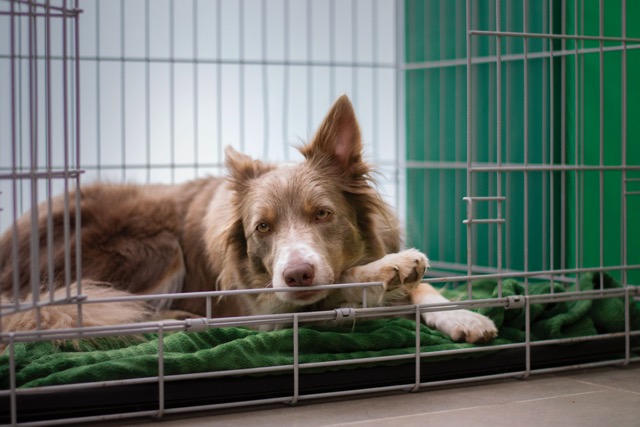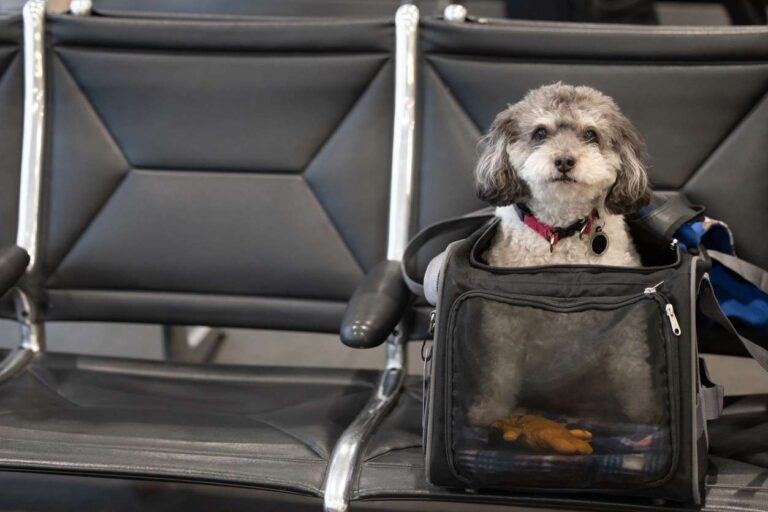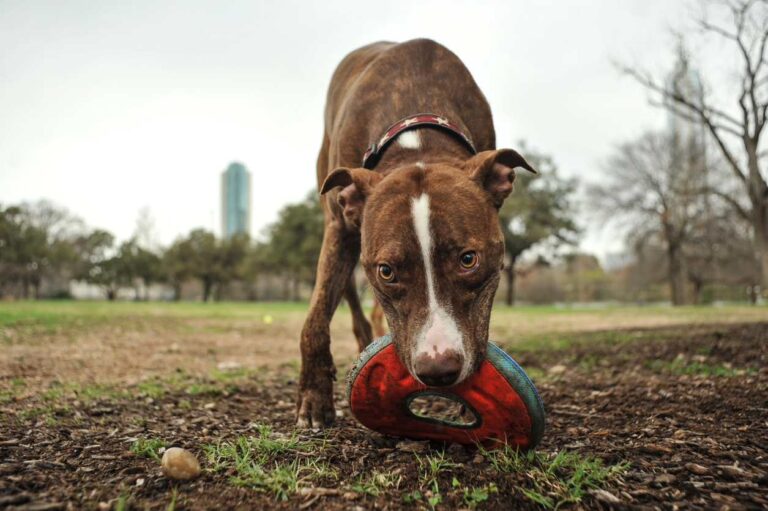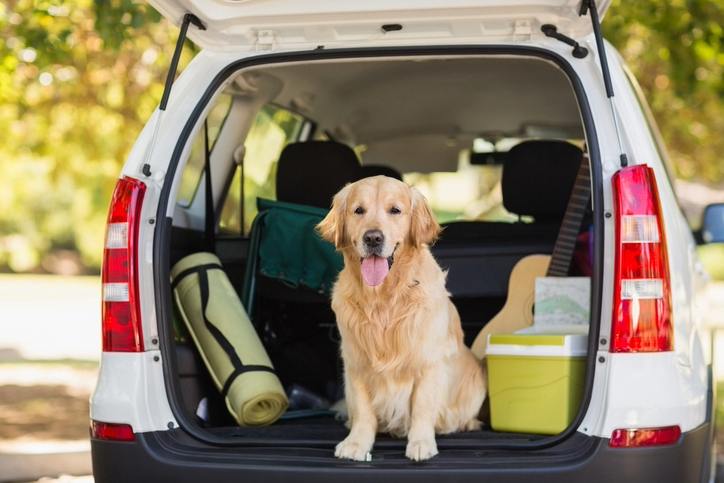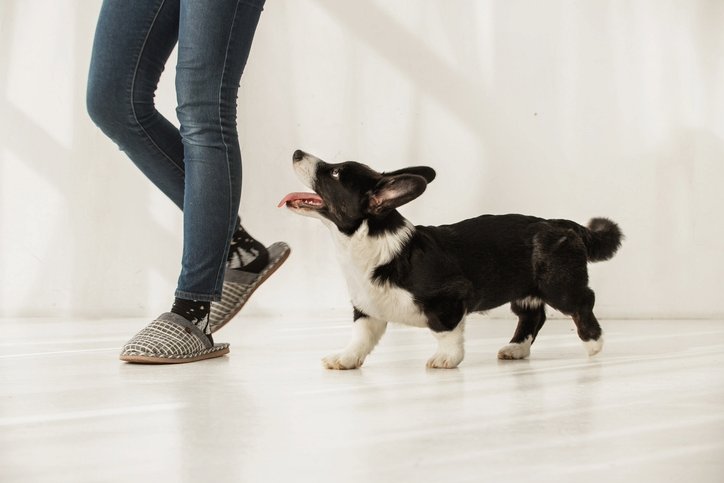Crate training is a great way to give your puppy their own safe place and also give you peace of mind when you leave them alone. You may have tried crate training and given up, or are in the trenches, so we put together some tips and tricks to help!
Benefits of crate training
When done correctly, your puppy will see their crate as a safe place for them to rest. Having a crate-trained puppy means that they are okay with being left alone when you are away from the home and during the night. Housebreaking can be made easier with a crate-trained puppy, as well as helping prevent separation anxiety.
Furthermore, traveling and boarding your dog in the future will be 100 times easier if they are already crate trained.
What is crate training?
A crate-trained puppy is one that can be left alone in their crate when their owners are away without barking or whining and can settle. Good crate training is done by associating the crate with positive things that they like (usually treats and food!) and with consistency.
What is separation anxiety?
Leaving your cute new puppy alone can be nerve-racking, for the puppy, as well as the owner. How can you tell what is regular puppy behavior and what is actually separation anxiety?
Separation anxiety can be described as high levels of stress when left alone in or not in their crate. This could include barking or crying without stopping, digging, clawing, or chewing on their crate or barriers in the home, and increased bodily functions due to stress (urinating, defecating, and salivating).
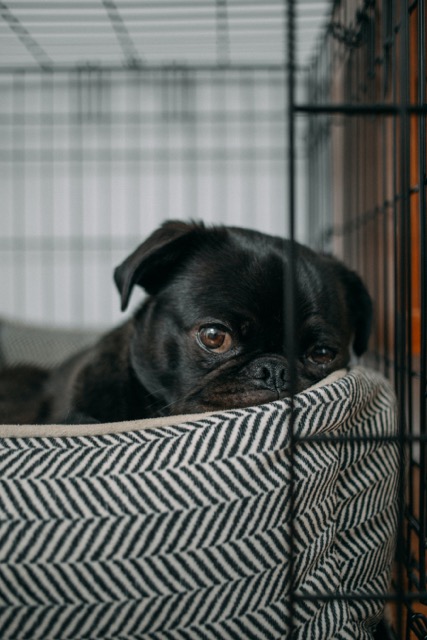
True separation anxiety is a serious behavior problem that can affect dogs of all ages, but most commonly middle-aged dogs. If your dog seems to be experiencing separation anxiety please reach out to one of our behavior consultants/trainers to come up with a plan to help them. It’s important to note that puppies usually show behaviors that can be misconstrued as separation anxiety but are actually attention-seeking behavior. You may actually be reinforcing these attention-seeking behaviors when trying to comfort your pup. Saying, “it’s okay buddy” when they bark or whine in their crate reinforces their behavior and so it is more likely to increase. Letting them out of their crate when they scratch on the door does the same. These unintentional reinforcers can lead to more and more severe behaviors until you give in- just like a child having a tantrum in a store to get some candy! Puppies are extremely smart and learn behaviors very quickly.
So how can you crate train the right way?
Spending some time away from your puppy can foster independence and autonomy. It may be hard to leave your puppy in the beginning, but working your way up to spending a few hours away every day will lessen the severity of when you actually need to spend time away from them.
Step 1: Choose the correct size crate
In our “Puppy Supply List” post, we list some crate options, but the most important thing is to find one that is comfortable and safe for your puppy. The crate should be big enough for them to stand and turn around in comfortably, but not extremely big, especially if they are working on housebreaking. If it is too big, your puppy can potty in the crate and still have plenty of room to lie down.
To discourage pottying in the crate, we recommend choosing one that is 1.5 times their length. Our favorites are the plastic molded airline crates. These crates are very secure and can even be used for travel. If your puppy tends to chew or dig, this crate is the best option. For a growing pup, you can buy a wire crate that will be big enough for them to grow into, and that has a divider to make it smaller for housebreaking.
Step 2: Introducing the crate to your puppy
Start slowly, it may be easy to just put your puppy in the crate and close the door, but that won’t necessarily make your puppy like being in the crate. With the door open, toss a toy or a few treats inside. When they go in, say the bridge word, “good!” and give a treat. Do not close the door but let them leave when they want to. You can also lure them in with a treat and give it when he’s inside. Work your way up to closing the door (then opening it right away), and then to closing the door and tossing in some treats every few seconds.
Step 3: Positive associations with the crate
Once your puppy is okay being in the crate with you in the same room and the door shut, you can start spending short amounts of time (5-10 minutes) with your puppy crated and you out of the room. We recommend doing this with their meal on the floor of the crate. Eating their meals in their crate will positively associate their crate with something they like (food!) and will also discourage accidents to happen in the crate. You can also stuff a kong with either food or some peanut butter (and you can freeze it if they finish quickly!). Having some toys that are not easily torn or broken can also help your pup occupy themself while you are gone. Make sure there is nothing absorbent on the floor of the crate to prevent accidents or that can be torn and ingested.
When you return, it is important that you don’t come back to let them out unless they are quiet. Do not enter the room if they are barking, crying, or scratching at their crate. If you are having trouble with this, reach out and we can help!
Step 4: Patience and consistency!
Crate training can be a daunting task, but the benefits outweigh the short-term frustration! It can take around 6 months for crate training to take effect, but once it does, you don’t have to worry about leaving your puppy home alone. Make sure that your puppy gets plenty of exercise and you can feed their meals or a stuffed kong in the crate to make the transition easier.
With patience and consistency, you’ll have your puppy crate trained in no time! Still hesitant? We would love to help. Contact us to come up with a training plan and even more tips and tricks to help you and your puppy!
